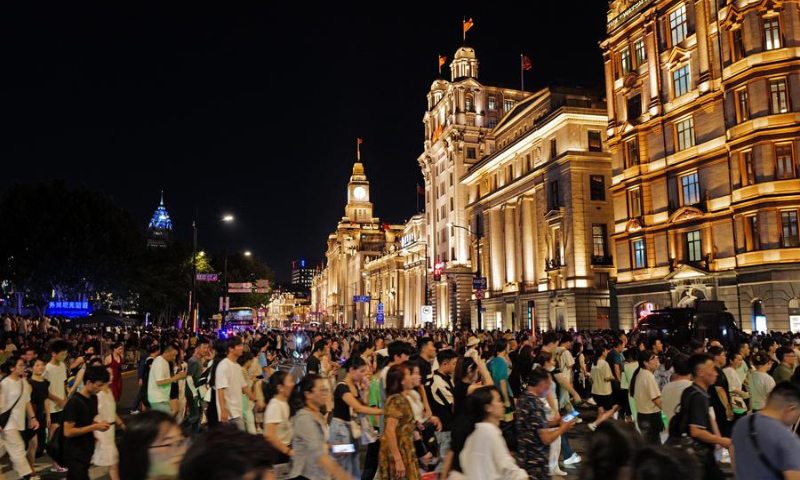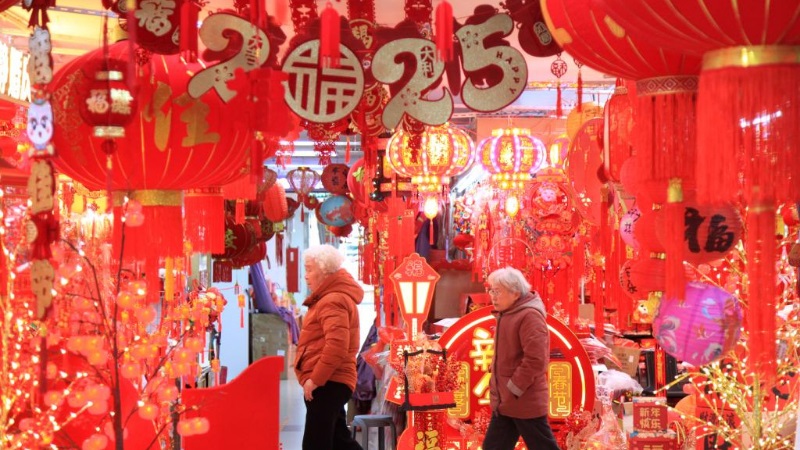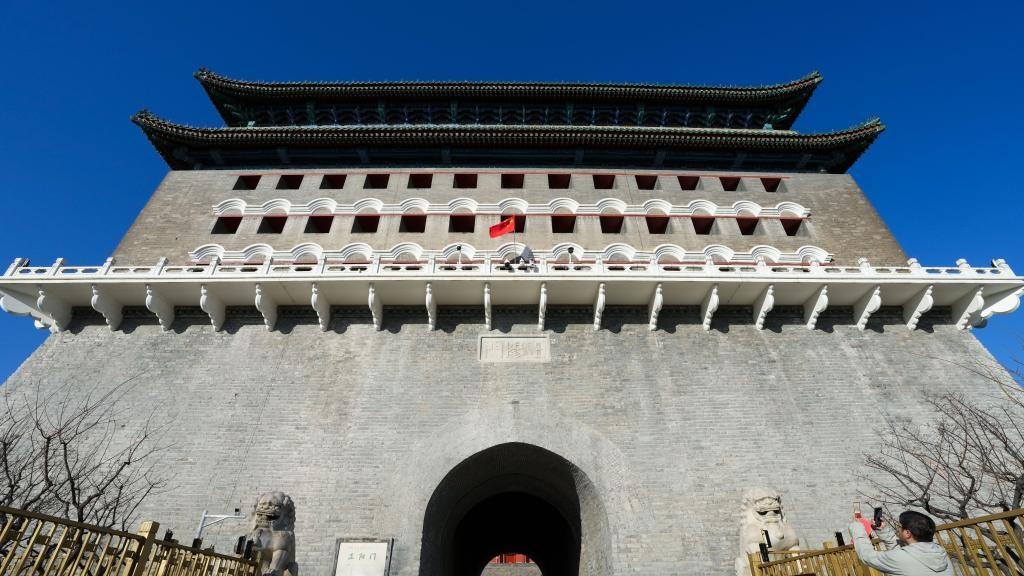As Chinese Spring Festival approaches, South Korean tourists flock to China, boosted by expanded visa-free policy

Tourists visit the Bund area in east China's Shanghai, July 22, 2024. (Yu Jiayi/Xinhua)
Bookings for South Korean tourists traveling to China are surging during the upcoming 2025 Chinese Spring Festival season, data from travel platforms showed, turbocharged by China's expanding visa-free policy for inbound tourism.
According to data from China's major online travel agency Ctrip.com, inbound trip reservations from South Korea to China during the pending Spring Festival saw a year-on-year jump of 452 percent, showcasing the ongoing elevated enthusiasm among South Koreans coming to China since the visa-free policy took effect in November.
Shanghai, a tier-one megacity, has become one of the most popular destinations for South Korean sightseers.
An increasing number of South Koreans are hopping on flights to Shanghai for weekends, marking a new trend among South Koreans to "head to China after Friday work." Attractions such as the Bund, Oriental Pearl Tower, Nanjing Road, Yuyuan Garden, and Shanghai Disneyland are particularly in demand.
According to the latest statistics of Shanghai General Station of Immigration Inspection, Shanghai Pudong International Airport has seen 7.6 million inbound and outbound foreigners this year, a 110-percent increase year-on-year, with nationals from Japan, South Korea, and the US topping the list.
Recently, topics related to crowded South Korean visitors at top Chinese hotpot chain Haidilao's Shanghai outlets have trended on Chinese social media. The company told the Global Times on Wednesday that its stores near popular tourist spots in Shanghai have been receiving between 60 and 200 South Koreans daily.
Hu Xiaozheng, manager of a Haidilao store near People's Square in downtown Shanghai, noted that since November 10, the number of Korean tourists visiting the store has jumped. The store now receives an average of 1,200 and 1,500 customers daily, with South Koreans making up about 15 percent of the total, Hu said.
"To enhance the dining experience for international guests, we have organized staff training in languages such as Korean and English to assist with ordering and other services, providing more convenient service for our guests," the company said.
Park Seung Chan, chairman of The Federation of Korea-China told the Global Times on Wednesday that China's visa-free policy significantly facilitates people-to-people exchanges between the two countries, especially for cities like Shanghai and Qingdao in East China's Shandong Province, which are closer to South Korea.
"The policies are poised to effectively catalyze a positive development in cultural and economic relations, expecting to set the stage for broader progress in bilateral ties," Park noted.
To further facilitate personnel exchanges, China announced on November 8 an expansion of its visa-free policy to include nationals from nine more countries, including South Korea, who can enter China without a visa for up to 15 days for business, tourism, visiting relatives, or transit purposes from the day until December 31, 2025.
Subsequently, the government further optimized the entry policy, extending the visa-free stay period to 30 days for nationals from 38 visa-free countries. The policy instantly sparked a new wave of inbound tourism to China.
Among the highlights is the growth in South Korean visitors. Data from Hana Tour, a travel agency in South Korea, shows that from November 1 to 21, the outbound travel orders to China the agency processed rose by 75 percent year-on-year, with Shanghai seeing a surge of 178 percent due to its proximity and convenient transportation, the Xinhua News Agency reported.
Different age groups of South Korean tourists have varying preferences for travel in China. Younger tourists enjoy bustling cities like Shanghai, where they can experience a blend of Chinese and Western cultures, or Qingdao for its beautiful coastal scenery and rich seafood, according to Park.
Park said that elderly tourists often opt for scenic destinations such as Zhangjiajie in Central China's Hunan Province and Jiuzhaigou in Southwest China's Sichuan Province, renowned for their majestic landscapes. These spots are particularly trendy among Koreans who wish to express filial piety by taking their parents on trips.
Expanding visa-free policy is a milestone in China's journey toward greater openness and shows its confidence on the global stage, according to Xinhua. In the third quarter of 2024, the number of overseas visitors who entered China reached 8.186 million, up 48.8 percent year-on-year. Among them, 4.885 million entered China visa-free, a year-on-year increase of 78.6 percent, data from the National Immigration administration revealed.
Photos
Related Stories
- S. Korea's acting president approves appointment of 2 constitutional court justices
- Chinese travel platforms expect holiday tourism boom, as policy support boosts consumption
- Airlines fly more passengers to snowy hot spots
- Spring Festival travel expected to reach record high
- S. Korea to review visa-free pilot project for Chinese group tourists
Copyright © 2025 People's Daily Online. All Rights Reserved.









